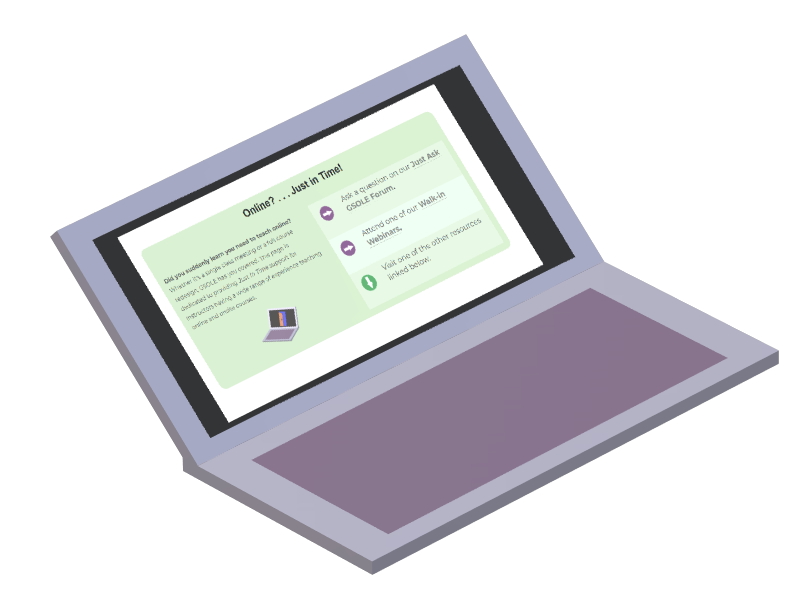Three Myths about Online Literacy Instruction (OLI) |
Overview
If you have never taken or taught an online course, you might be feeling anxious about moving your course online--and prone to believing the naysayers. However, research has found that students can learn and write well online. Let’s dispel a few myths about online instruction. |
|
Myth 1: OLI leads to less engaged learning and higher dropout ratesJust as any well-designed course can facilitate student success, any poorly designed and poorly delivered course can lead to less engaged learning and higher dropout rates—whether face-to-face or online. A number of factors can attribute to student dropout in an online course, including the student’s support system and motivation to persist, institutional support for online students, the degree to which online students feel they get meaningful interaction with instructors and peers, the usability of the course design, access to technologies, among others. The key to engagement and retention in an online course? Instructor presence and intentional opportunities for students to interact with each other and with the instructor. An organized and easy-to-understand course site. Clear expectations for assignments and due dates. Want to learn more? Check out the resources below: Relevant Resources
Myth 2: OLI disadvantages vulnerable populations of studentsThis myth assumes that face-to-face instruction is totally inclusive. Can OLI can disadvantage students who do not have reliable access to internet and technologies? Yes. But OLI can also be an inclusive pedagogy for students who have constraints in their ability to travel onsite for education. Further, instructors can take measures in designing their courses that increase accessibility:
Want to learn more? Check out the resources below. Relevant Resources
Myth 3: OLI is best done when it mirrors face-to-face instruction |
OLI is best done when it takes advantage of everything OLI has to offer! The OLI learning environment is different from the face-to-face classroom. Instead of trying to replicate face-to-face instruction, look at the possibilities that come with teaching online. These affordances include flexible timing, the ability to differentiate learning, opportunities for struggling students to practice applying knowledge multiple times.
You can overcome some of the things you may miss in face-to-face instruction by designing meaningful online learning. For instance, if you are worried students will not have ample practice applying concepts, create scenarios that ask students to practice applying concepts to real world situations. If you are worried students will not interact with their peers, design collaborative learning opportunities or peer review activities.
Relevant Resources
Dell, C. A., Dell, T. F., & Blackwell, T. L. (2015). Applying Universal Design for Learning in online courses: Pedagogical and practical considerations. Journal of Educators Online, 12(2), 166–192.
Gilliland, B., Oyama, A., Stacey, P. (2018). Second language writing in a MOOC: Affordances and missed opportunities. Teaching English as a Second or Foreign Language-Electronic Journal (TESL-EJ), 22(1), 1–25.
Hill, J.R. (2006). Flexible learning environments: Leveraging the affordances of flexible delivery and flexible learning. Innovative Higher Education, 31, 187–197 https://doi.org/10.1007/s10755-006-9016-6

